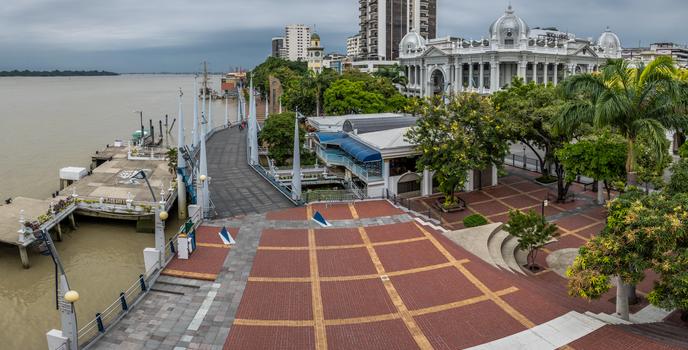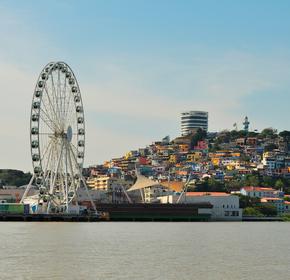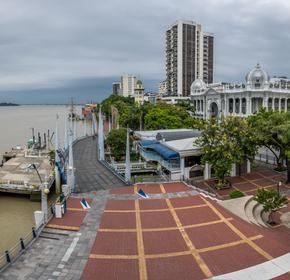1. Parque Histórico de Guayaquil: The Strand of The Pacific's Pearl
Situated just 2° south of the Equator on Ecuador's sultry Pacific coastline, the port city of Guayaquil is Ecuador's teeming commercial hub, its largest and most modern city, and humanity's sole transit point to the awe-inspiring nature of the Galápagos Islands. From Guayaquil's colonial era to the early 20th Century cocoa boom -- which was fundamental in the development of Ecuador's economy -- to the vast wildlife, unique traditions, culture, crafts and architecture of this low-lying city on the Guayas River, Parque Historico is a tranquil 20-acre park/zoo that beautifully links the deep historical significance of "La Perla del Pacifico" to its expansively modern future.
2. Cerro Santa Anna: She's Hoisted the Jolly Roger!
Back in the day, an approaching ship flying the black flag was sighted first from the vantage point of Cerro Santa Anna, or Santa Ana Hill: an iconic, 200-foot enclave offering a panoramic view of the city's surroundings. The site of the original Guayaquil settlement, you can follow the winding pathways dotted by shops, galleries and colorfully-painted hillside houses as you climb to the ancient fortifications and river-facing cannons that gallantly once tried to suppress those buccaneering cutthroats from the sea.
3. Malecon 2000: Ah, That Breeze!
The ideal place to catch a cool evening breeze on an after-dinner stroll, Malecon 2000 is a modern urban park and 1.5-mile riverside boardwalk featuring ornate gardens, fountains, museums, playgrounds and a small commercial center where you can grab a mean sangria, a delightful cup of domestic coffee or a delicious plate of cheesy, golden-brown potato patties called llapingachos.
4. La Rotonda: Too Big for Peru
Halfway along the Malecon stands Guayaquil's most impressive monument La Rotonda, which iconically depicts the mysterious 1822 Guayaquil meeting between Simón Bolívar and José de San Martín. Flanked by handsome fountains and brilliantly illuminated at night, the monument celebrates two leaders who shared the broad aim of liberating South America from Spanish control. Yet nothing is known about their discussions in Guayaquil. After their conference, Bolivar triumphed with the creation of sovereign states in Venezuela, Bolivia, Colombia, Ecuador, Peru and Panama, while San Martin quietly slipped out of Guayaquil and history's limelight forever. One can only surmise that together the two giants of South American independence were too big for Peru.
5. Barco Pirata Morgan: Brave Captains and Fine Crews
Be part of a fine crew by taking a scenic, hour-long river cruise on a replica of the schooner captained by the infamous, swashbuckling privateer Henry Morgan. As the kid-friendly cruise takes in Guayaquil's most emblematic sites such as Barrio las Peñas, Malecon and Puerto Santa Ana as well as dancing, shows and open bar, Capt. Morgan's immortal words from the 1940s movie The Black Swan may even come to mind: "You do not vote pirates off the seas. You engage them, rake, and scuttle them. My lords and gentlemen, we have ships, brave captains and fine crews."








